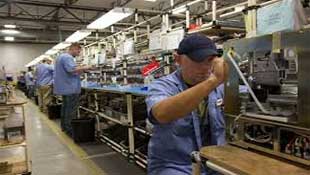| |
|
| |
|
 |
Supply
Chain by the Numbers |
| |
|
| |
- Feb. 20, 2015 -
|
| |
|
| |
|
| |
|
| |
The Need for Two-Speed Supply Chains; Should Deflation be a Worry?; Toll of West Coast Port Turmoil Coninues to Grow; US Manufacturing Trending in Right Direction |
| |
|
| |
| |
| |
280 |

|
|
|
| |
| |
|
6
|
|
Number of US manufacturing facilities that Honda would see stopped or reduce product next week - the result of delays at West Coast ports in the on-going labor saga out there, which is starting to take a real toll on supply chain and the economy. Toyota and Subaru were also among those saying they would modify their operations due to a lack of parts. The North American Meat Institute said its industry is losing $85 million every week while cuts of meat and poultry sit in freezers. Washington's apple crop is the largest in state history, but farmers are needing to literally dump to apples into canyons because they can’t get exports out of the country. You get the idea - what a mess, even without an official strike or lockout.
|
| |
| |
|
| |
| |
102.1 |

|
That was the level of the Federal Reserve's US manufacturing index in January, according to numbers reported last week, meaning US manufacturing output was 2.1% above baseline (index = 100) and peak year production levels in 2007. After falling to a level of just about 80 in mid-2009, the index has seen a slow but steady rise ever since, finally hitting the 100 level last July and staying there through January. This marks the third consecutive month the index has been at 102 or higher. January output was also 5.6% higher than seen in 2014. Is there a coming US manufacturing renaissance? The numbers really don't show it yet, but the trend is clearly in the right direction. |
| |
| |
|
|
|
| |
 |
 |
| |
|
|
| |